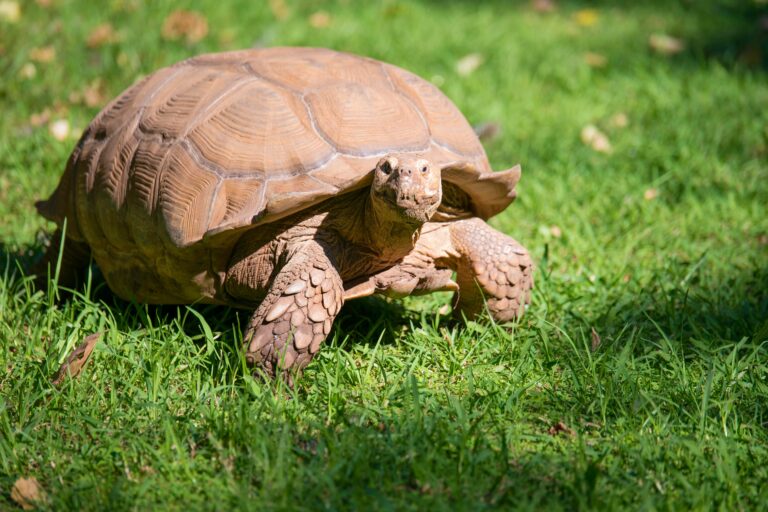How big Sulcata tortoise get?

The remarkable size and lifespan of Sulcata tortoises, also known as African spurred tortoises, captivate experts and enthusiasts alike. The Sulcata tortoise, one of the biggest types of tortoises worldwide, has an amazing growth and perseverance tale from infancy to adulthood. In this blog post, we explore the incredible world of Sulcata tortoises and discover the maximum size at which these wonderful creatures can grow.
Knowing the Sulcata Tortoise:
Native to the dry parts of sub-Saharan Africa, these tortoises inhabit semi-deserts, savannas, and thickets. The huge and characteristically high-domed shell of the sulcata tortoise is indicative of its herbivorous nature, as it mostly consumes grasses and other flora. In their natural environment, their short, tough skin and robust physique shield them from predators.

Growth rate and size:
The remarkable growth rate of Sulcata tortoises is one of its most fascinating characteristics. These turtles go on an ongoing path of development from the moment they hatch and continue this journey throughout their lives. Sulcata turtles are tiny when they hatch, growing to be only a few inches long and a few ounces in weight. They do, however, grow quickly when given the right attention and nourishment.
During their first few years, sulcata turtles grow rapidly, gaining size and strength at an astonishing rate. When they reach adulthood, which typically occurs between the ages of 15 and 20, they have grown into enormous animals. Adult Sulcata tortoises can weight between 80 and 200 pounds, with very uncommon individuals exceeding greater than 200 pounds. They can also grow to a maximum length of thirty inches, which includes their remarkable shells.
Factors Influencing Growth:
Several factors influence the growth rate and size of Sulcata tortoises. Proper nutrition plays a crucial role in ensuring healthy growth. A diet rich in fibrous greens, such as grasses, hay, and leafy vegetables, provides essential bone and shell development nutrients. Additionally, access to natural sunlight or UVB lighting is vital for synthesizing vitamin D3, which aids in calcium absorption and promotes strong bones.
The growth of Sulcata tortoises is also significantly influenced by environmental factors. These tortoises need ideal temperatures in their habitat to survive, and they do best in warm, dry areas. In addition to promoting activity and preventing stunted growth, having enough room to walk about and explore is essential.

Care & Maintenance:
To guarantee the healthy growth and well-being of Sulcata tortoises, appropriate care and maintenance must be provided. They need a huge enclosure with lots of space to roam about, especially as they become bigger. A range of hiding places, places to bask, and surfaces that resemble their natural habitat should all be included in the enclosure.
It is advised that they have routine veterinary examinations to track their development and general health. To prevent overgrowth and to make sure they can eat and move about properly, it could also be necessary to trim their nails and beaks.
It’s crucial to remember that sulcata turtles have lengthy lives—they can live up to 50 years in captivity. Their longevity and well-being depend on receiving care and dedication for the rest of their lives.
Last but not least, Sulcata tortoises are amazing animals distinguished by their enormous size and gradual yet consistent growth. Their developmental path, spanning from toddlers to elderly adults, is evidence of their perseverance and flexibility. Enthusiasts may guarantee the health and welfare of these amazing animals for many years to come by learning the elements that influence their growth and giving them the right care and upkeep. Sulcata provides countless chances to learn about and enjoy the world of turtles, regardless of your level of experience as a keeper or as an inquisitive bystander.
Read More: When do German shepherd open their eyes?